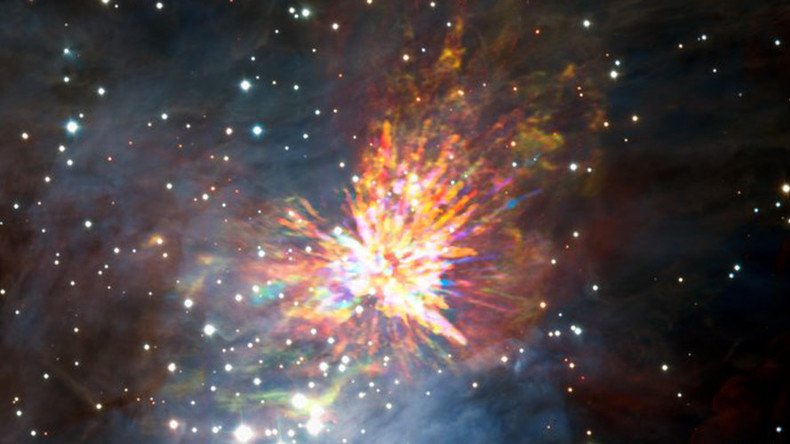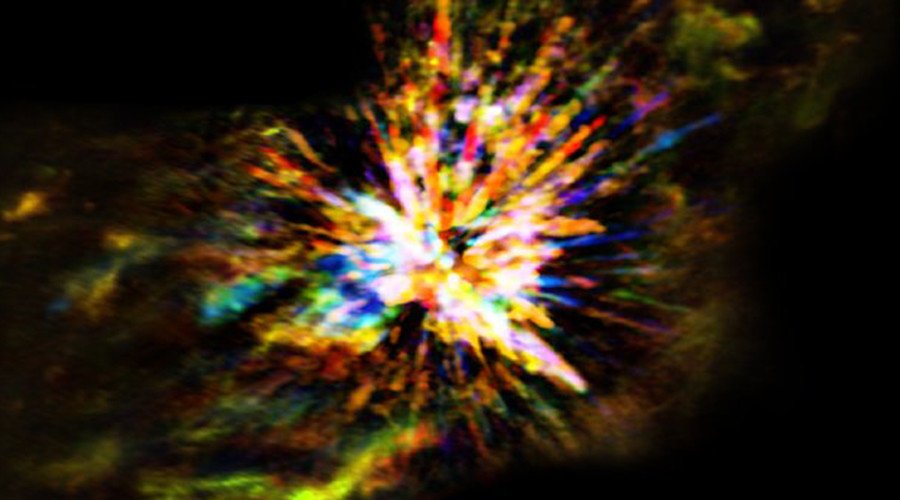Twinkle, twinkle exploding star: Epic star birth captured in spectacular images

Explosions don’t just mean the end of a life cycle – they can also signal stellar birth. Spectacular images released by the European Southern Observatory (ESO) show the fireworks display that marks the start of a star’s life cycle.
. @ALMAObs captures dramatic stellar fireworks https://t.co/Z55Hg2TPKwpic.twitter.com/JJSyz7LaOK
— ESO (@ESO) April 7, 2017
Captured 1,350 light years away in the Orion constellation, the images show an active star formation known as Orion Molecular Cloud 1 (OMC-1) which occurred roughly 500 years ago, according to ESO.
What appears on first glance to be the death of a star is revealed to be gravity pulling together newly-ignited stars, resulting in a violent collision reminiscent of a Fourth of July fireworks display.
The explosion, which ultimately leads to the birth of a new star, released as much energy as the Sun emits over 10 million years.
The images were captured by the Atacama Large Millimeter Array (ALMA), astronomical radio telescopes located in the Atacama desert in Chile, which is capable of peering across space and time into the explosion.
Such explosions last centuries, according to ESO, a fleeting amount of time to the universe.
The explosion was first detected in 2009, but could not be confirmed and studied in detail until ALMA produced the high-quality images.













